I'm using 'dotnet watch run' to watch for changes in my server code and 'ng build --watch' to watch for changes in my Angular code. Both are rebuilding the code properly into "bin/" and "wwwroot/" respectively.
myapp.csproj
<Project Sdk="Microsoft.NET.Sdk.Web">
<PropertyGroup>
<TargetFramework>myapp</TargetFramework>
</PropertyGroup>
<ItemGroup>
<Folder Include="wwwroot\" />
</ItemGroup>
<ItemGroup>
<PackageReference Include="Microsoft.AspNetCore.All" Version="2.0.0" />
</ItemGroup>
<ItemGroup>
<DotNetCliToolReference Include="Microsoft.VisualStudio.Web.CodeGeneration.Tools" Version="2.0.0" />
</ItemGroup>
<ItemGroup>
<DotNetCliToolReference Include="Microsoft.DotNet.Watcher.Tools" Version="2.0.0" />
</ItemGroup>
<ItemGroup>
<!-- extends watching group to include *.js files -->
<Watch Include="wwwroot\*.js;bin\**\*"/> <!-- Exclude="node_modules\**\*;**\*.js.map;obj\**\*;bin\**\*" /> -->
</ItemGroup>
</Project>
My Startup.cs is set to read from the "wwwroot" file and serve my transpiled TypeScript.
Startup.cs
using System;
using System.Collections.Generic;
using System.Linq;
using System.Threading.Tasks;
using Microsoft.AspNetCore.Builder;
using Microsoft.AspNetCore.Hosting;
using Microsoft.Extensions.Configuration;
using Microsoft.Extensions.DependencyInjection;
using Microsoft.Extensions.Logging;
using Microsoft.Extensions.Options;
// using Microsoft.AspNetCore.SpaServices.Webpack;
namespace myapp
{
public class Startup
{
public Startup(IConfiguration configuration)
{
Configuration = configuration;
}
public IConfiguration Configuration { get; }
// This method gets called by the runtime. Use this method to add services to the container.
public void ConfigureServices(IServiceCollection services)
{
services.AddMvc();
}
// This method gets called by the runtime. Use this method to configure the HTTP request pipeline.
public void Configure(IApplicationBuilder app, IHostingEnvironment env)
{
if (env.IsDevelopment())
{
app.UseDeveloperExceptionPage();
/*app.UseWebpackDevMiddleware(new WebpackDevMiddlewareOptions {
HotModuleReplacement = true
});*/
}
app.UseDefaultFiles(); // URL rewriter to serve default web page
app.UseStaticFiles(); // makes files in wwwroot servable
app.UseMvc();
}
}
}
I run the project with "npm run saw" concurrently so both watch commands can be in the same terminal. I want the client and server to run on the same port so that's why I let "dotnet run" serve the app.
package.json
"scripts": {
"ng": "ng",
"start:client": "ng serve",
"build:client": "ng build",
"build:client:watch": "ng build --watch",
"build:server": "dotnet build",
"build:all": "npm run build:client && npm run build:server",
"build:client:prod": "ng build --prod --env=prod",
"build:all:prod": "npm run build:client:prod && npm run build:server",
"test:client": "ng test",
"lint:client": "ng lint",
"e2e:client": "ng e2e",
"restore": "dotnet restore",
"start:all": "ng serve --live-reload false && dotnet run",
"start:all:watch": "concurrently -k \"npm run build:client:watch\" \"dotnet watch run\"",
"saw": "npm run start:all:watch"
}
Finally, here is my overall project structure. How can I re-serve the "wwwroot" folder if I'm using dotnet run on "localhost:5000" after dotnet core detects that "wwwroot" (or server in "bin") has been re-built?
